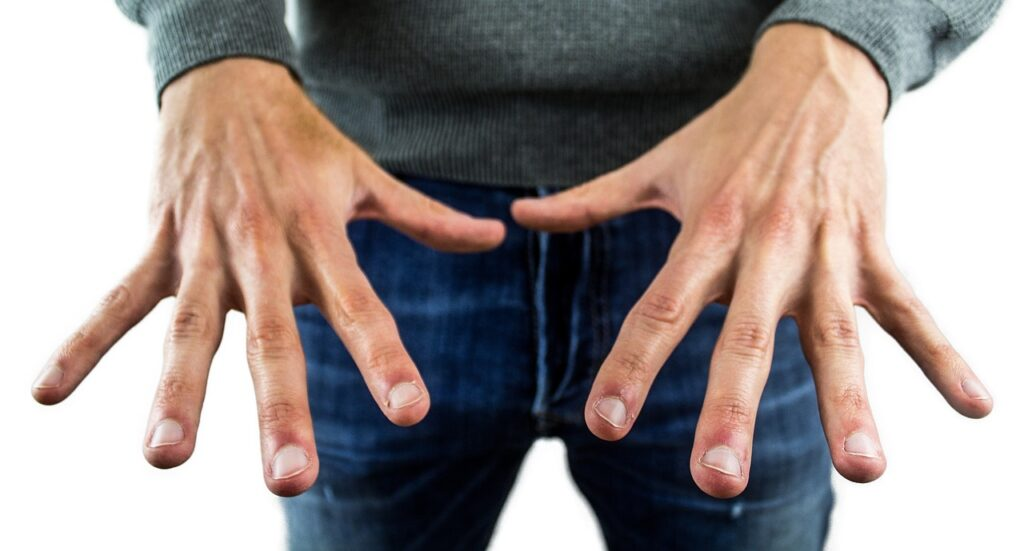Our bodies can give us clues about potential health issues in unexpected ways, and sometimes, the signs can be right at your fingertips—literally. According to Dr. Joe, an emergency response medic, one such warning sign may be hidden in your fingernails. In a viral TikTok post, he explained that a subtle pulsation visible under the fingernail could indicate a serious heart condition. If you press down on your fingernail and notice a red pulsation, it may be a reason to visit your doctor. But what exactly is this sign, and what does it reveal about your heart health?
What Your Fingernails Say About Your Heart Health

The phenomenon Dr. Joe refers to is associated with a condition known as aortic regurgitation. This condition affects the aortic valve, one of the four valves that regulate blood flow through the heart. In cases of aortic regurgitation, the valve doesn’t close properly, allowing blood to leak back into the heart’s left ventricle. Over time, this causes the ventricle to enlarge and thicken as it tries to handle the excess blood. Initially, this can help maintain normal blood flow, but as the heart muscle weakens, the condition becomes more severe.
Aortic regurgitation can be life-threatening, which is why it’s crucial to recognize the early signs, even in places you might not expect—like your fingernails.
The Causes of Aortic Valve Regurgitation
Several factors can cause aortic valve regurgitation, and understanding these causes is essential for recognizing your own risk. One common cause is a congenital defect called a bicuspid valve, where the aortic valve has only two flaps (or cusps) instead of three. This condition is often inherited, so if a family member has been diagnosed with a bicuspid valve, your risk may be higher.
Another potential cause is aortic stenosis, which occurs when the aortic valve narrows due to a build-up of calcium deposits. This can force the heart to work harder to pump blood, leading to valve damage over time. Endocarditis, an infection that inflames the inner lining of the heart, is another condition that can weaken the aortic valve, as can rheumatic fever, a condition more common in earlier generations but still a risk today.
Other Conditions That Lead to Aortic Regurgitation
Beyond congenital defects and infections, other health issues can affect the aorta and lead to aortic valve regurgitation. For instance, Marfan syndrome, a genetic disorder that affects the body’s connective tissue, can cause the aorta to enlarge and damage the valve. Lupus, an autoimmune disease, is another risk factor, as it can lead to inflammation and weakening of the aortic valve.
Trauma, such as a severe chest injury, can also damage the aorta and result in regurgitation. Additionally, an aortic dissection, which is a tear in the inner layer of the aorta, may cause this condition. These various causes show that aortic regurgitation can result from a wide range of health issues, making it essential to pay attention to subtle signs, such as those in your fingernails.
The Quincke Fingernail Sign: A Subtle Yet Serious Indicator

One of the most telling signs of aortic regurgitation is known as the Quincke sign, named after Dr. Heinrich Quincke, a German physician who first described it in 1868. The Quincke sign is visible when capillary pulsations occur in the fingernail beds. This pulsation can be seen by gently pressing on the tip of your fingernail and then observing the nail bed. If you notice alternating redness and paleness with each heartbeat, it could be a sign of aortic regurgitation.
The Quincke sign happens due to an increased systolic stroke volume, widened pulse pressure, and a rapid drop in arterial pressure. It’s not a guaranteed indicator of heart disease, but if you spot it, it’s a signal that you should consult with a healthcare professional.
Symptoms of Severe Aortic Regurgitation

Although aortic regurgitation can develop over time without obvious symptoms, there are some red flags to be aware of. In the early stages, people may not feel any discomfort, but as the condition worsens, symptoms can become more apparent. These include:
- Shortness of breath, especially during exercise or when lying down.
- Fatigue and weakness, particularly after physical activity.
- Irregular heartbeats or palpitations.
- Lightheadedness or fainting.
- Chest pain or tightness, especially following exertion.
- Swelling in the ankles and feet, which can be a sign of fluid buildup due to heart inefficiency.
If these symptoms occur alongside the Quincke fingernail sign, immediate medical evaluation is crucial.
When Should You See a Doctor?

The Quincke sign is just one of many potential signs of severe aortic regurgitation. There are over 30 different indicators associated with this condition, but the combination of symptoms and visible signs like the fingernail pulsation should not be ignored. If you notice any of these signs, particularly the visible pulsations in your fingernails, it’s time to see a doctor.
Diagnosing aortic regurgitation typically involves imaging tests like echocardiograms or MRIs, which allow doctors to assess the valve’s function and the heart’s structure. Depending on the severity of the condition, treatments can range from medications to more invasive procedures such as valve replacement surgery.
The Bottom Line: Watch Your Fingernails for Clues About Your Heart

Your fingernails might seem like an unlikely place to detect a serious heart condition, but the Quincke sign is a subtle yet potentially life-saving indicator. While pressing on your nail bed and noticing pulsations is not a definitive diagnosis, it is a sign that you should seek medical advice, especially if you experience other symptoms of aortic regurgitation.
By paying attention to your body’s small signals, like the ones in your fingernails, you can catch serious conditions early and get the help you need to protect your heart.


